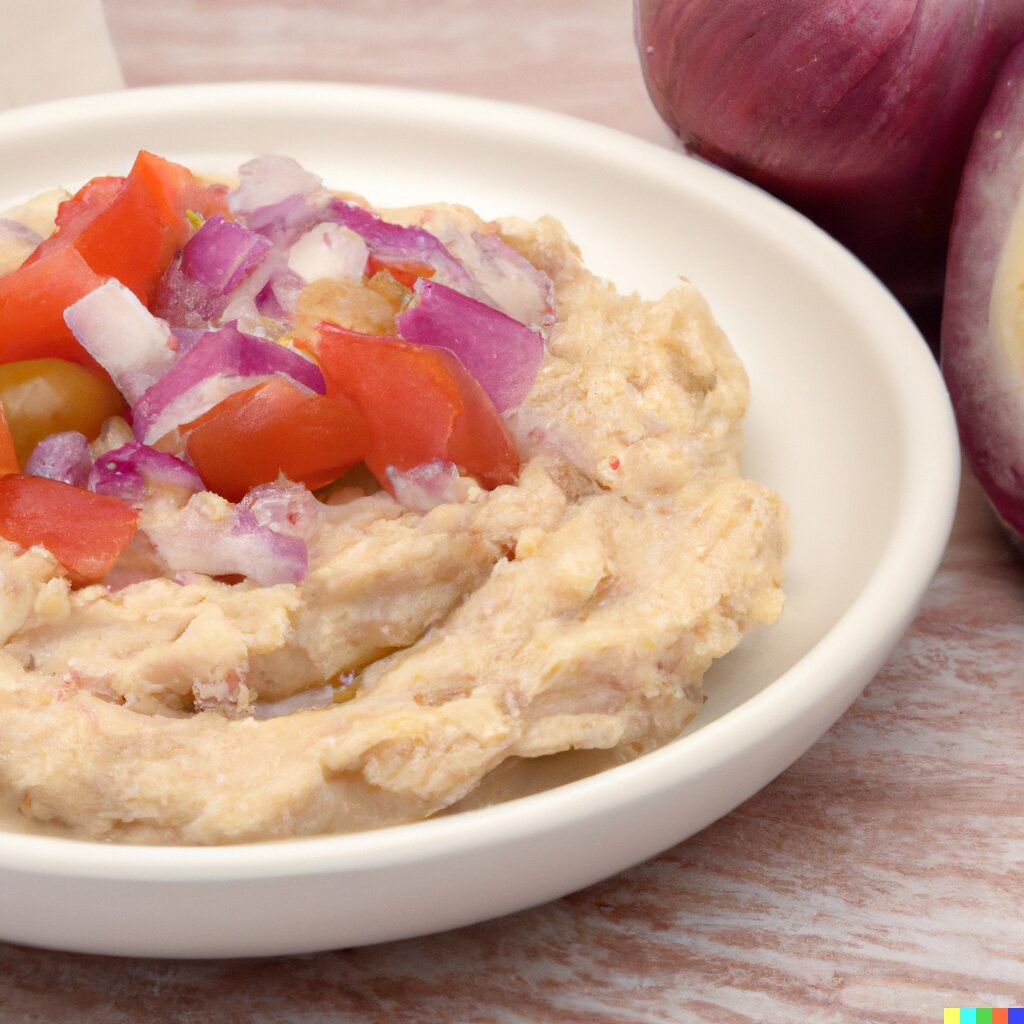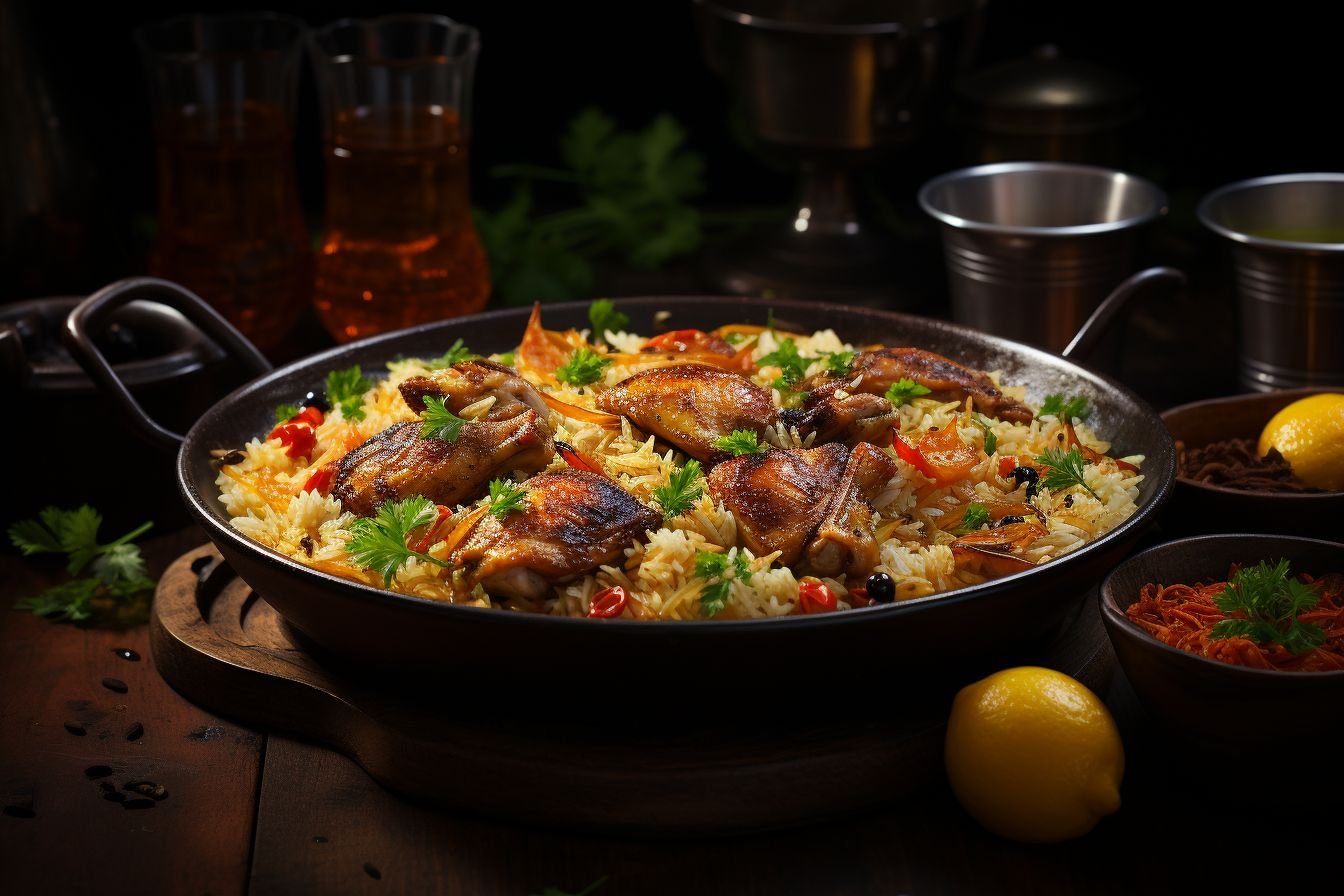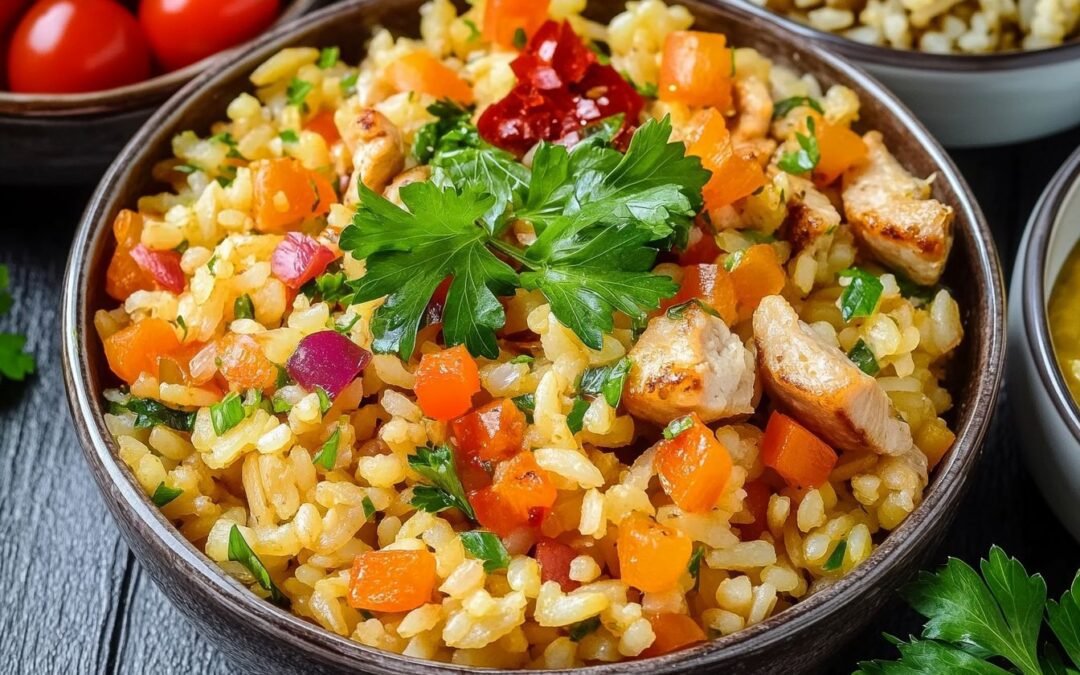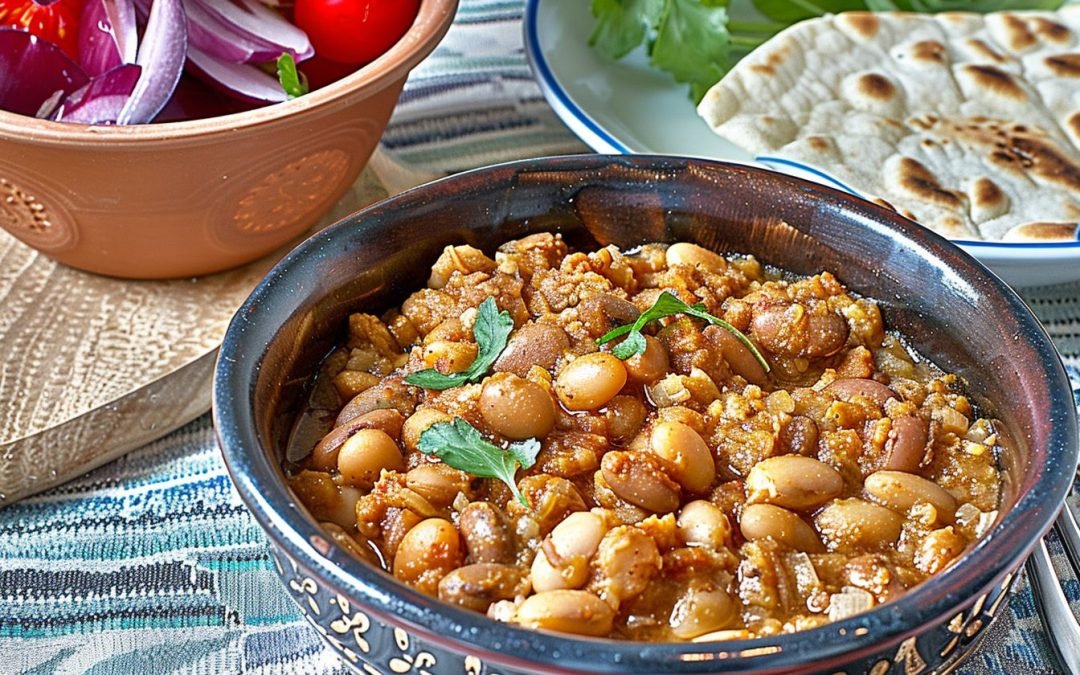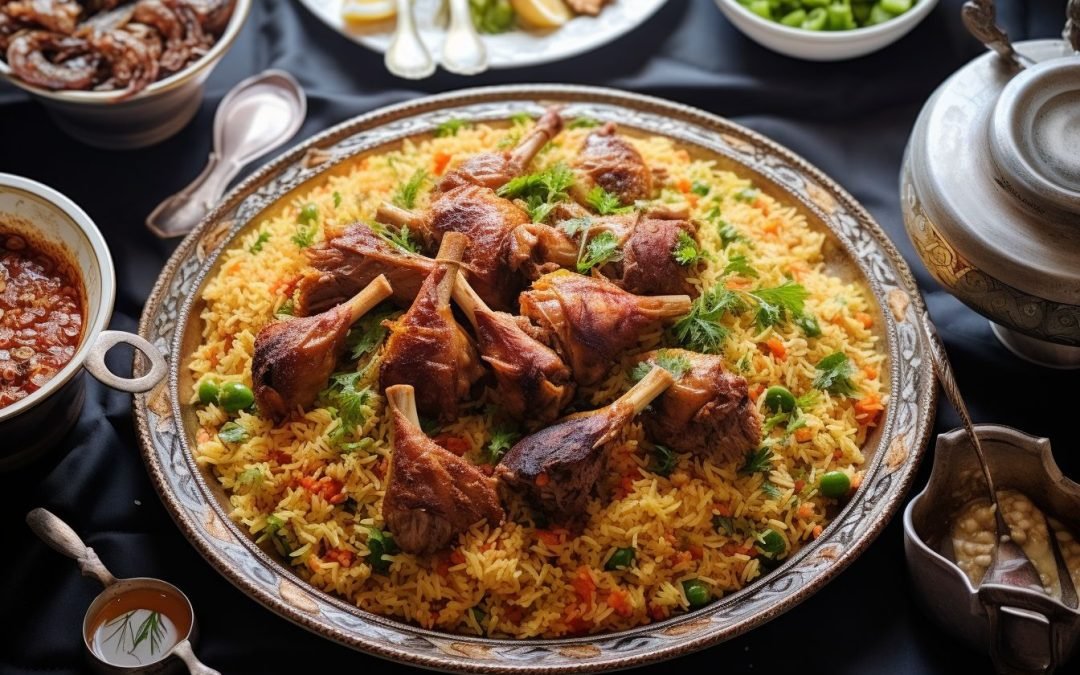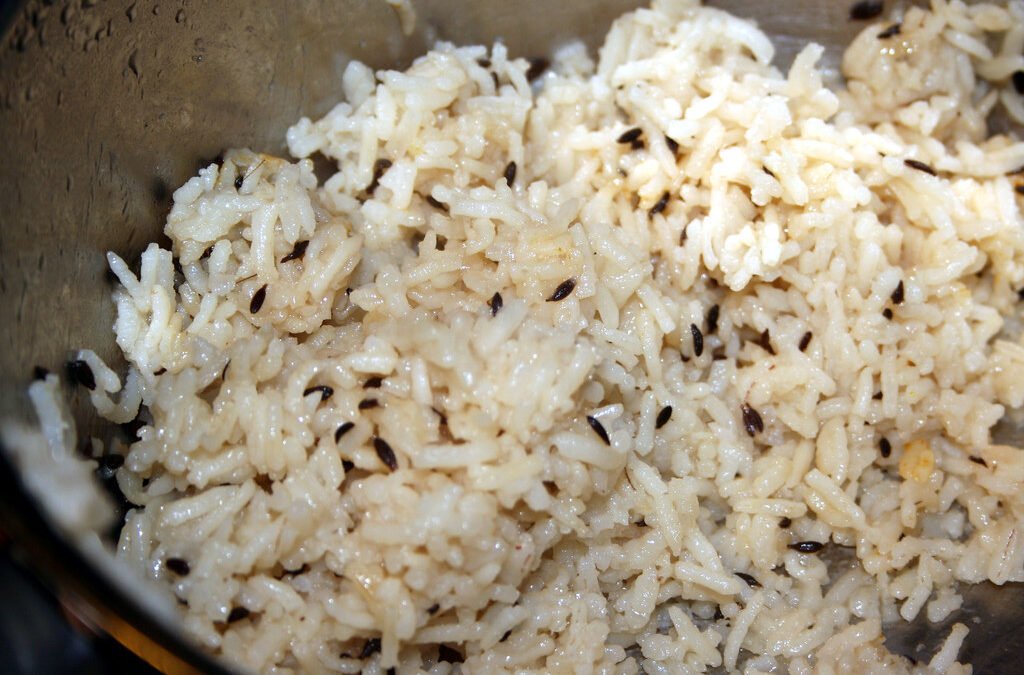I love trying out new recipes, and recently I came across a delicious chicken kabsa recipe that I just had to share! This Middle Eastern dish is packed with flavor and perfect for a hearty family dinner or entertaining guests. The combination of tender chicken, aromatic spices, and fluffy rice is sure to impress.
To make this chicken kabsa recipe, you will need a few key ingredients. For the chicken, you’ll need either four whole leg quarters or one whole chicken cut into four pieces. You’ll also need yellow onions, garlic, a dry lemon, cinnamon sticks, bay leaf, cardamom pods, cloves, olive oil, tomato puree, tomato sauce, tomato paste, water, salt, and kabsa spices. The kabsa spices mix includes cinnamon, black pepper, garlic powder, onion powder, curry powder, turmeric, ground cardamom, 7 spice, and coriander powder. Lastly, you’ll need basmati rice, chicken broth, and salt for the rice.
History of Chicken Kabsa
As a food enthusiast, I have always been interested in the history and origins of different dishes. Chicken kabsa is a popular Middle Eastern dish that has a rich history and is enjoyed by many. In this section, I will explore its origin and its regional variations.
Origins
Chicken kabsa is believed to have originated in Saudi Arabia and is considered the national dish of the country. It is a rice-based dish that is usually made with chicken, but can also be made with lamb, beef, or even fish. The dish is traditionally cooked in a large pot with a blend of aromatic spices, including cumin, cardamom, and cloves. The spices give the dish a unique flavor and aroma that is irresistible.
The dish has been around for centuries and has been passed down from generation to generation. It was originally a Bedouin dish, and over time, it spread throughout the region and became popular in other Middle Eastern countries.
Regional Variations
Chicken kabsa is a versatile dish that can be prepared in many different ways. Each region has its unique take on the dish, which makes it even more interesting. In Saudi Arabia, the dish is usually served with a tomato and cucumber salad, while in the UAE, it is served with a side of yogurt.
However, in Kuwait, the dish is made with a tomato-based sauce and is usually served with a side of pickles. In Oman, the dish is made with a spicy tomato sauce and is often served with a side of dates.
In conclusion, this is a delicious and flavorful dish that has a rich history and is enjoyed by many. Its origins in Saudi Arabia and its regional variations make it a unique and interesting dish that is worth trying.
Ingredients:
- 4 whole leg quarters or 1 chicken cut into 4
- 1½ large finely chopped yellow onions
- 6 finely minced garlic cloves
- 1 dry lemon
- 1 dried bay leaf
- 3 cinnamon sticks
- 5 cardamom pods
- 4 whole cloves
- 3 tbsp of olive oil
- 1 large pureed tomato
- ¾ cup tomato sauce
- 1 tbsp of tomato paste
- 4 cups of water
- 1½ tsp of salt
- 2 tbsp of kabsa spices
For the Kabsa Spices Mix:
- ½ tsp of cinnamon
- ½ tsp of black pepper
- 1 tsp of garlic powder
- 1 tsp of onion powder
- 1 tsp of curry powder
- ½ tsp of turmeric
- ½ tsp of ground cardamom
- 1½ tsp of 7 spice
- 1 tsp of coriander powder
For the Rice:
- 1 cup basmati rice (wash and soak it for 20 minutes)
- 1 tsp of salt
- 2 cups of chicken broth
How to make chicken kabsa?
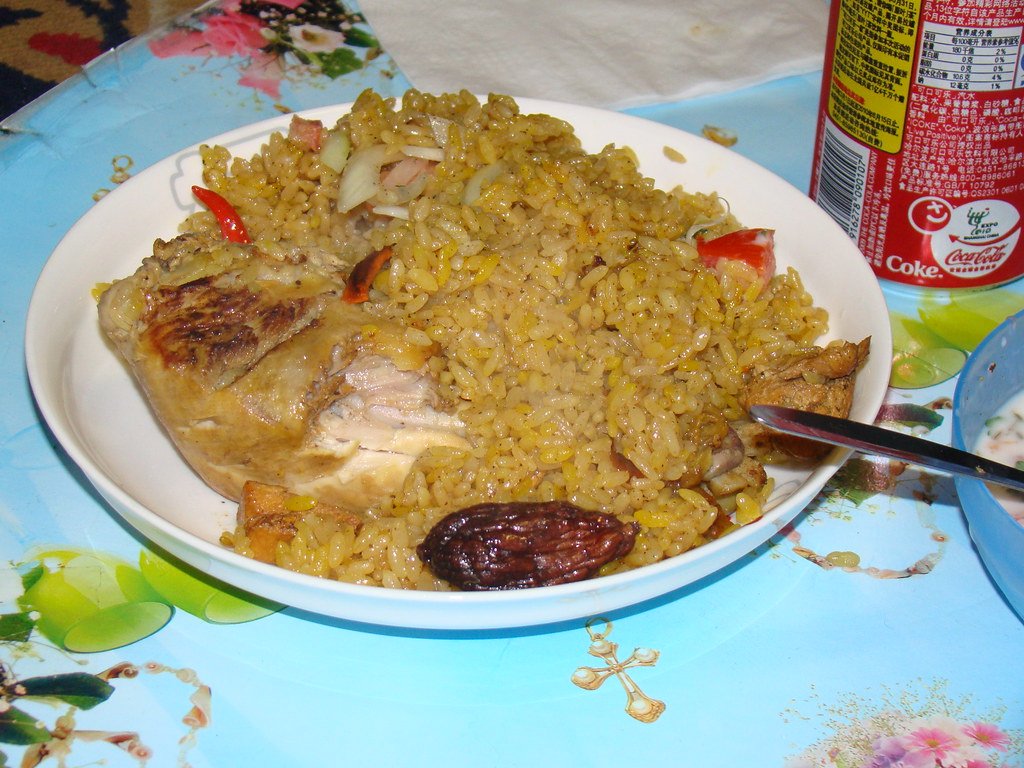
- Warm olive oil in a pot and toss in finely chopped onions. Cook them until they turn brown on medium-high heat.
- Toss in the minced garlic and cook until it smells fragrant. If you fancy some heat, consider adding a spicy pepper now.
- Now, toss in the chicken and whole spices, stirring everything together for 2-3 minutes. Then, add the ground spices and mix it all again.
- For the sauce, combine tomato sauce, tomato paste, pureed tomato, and water.
- Stir it all together, cover the pot, and allow it to boil vigorously for 5 minutes. Then, reduce the heat and let it simmer for 30 minutes or until the chicken is fully cooked.
- When the chicken’s done, take out the whole spices from the broth and set the broth aside. Then, crisp up the chicken in a pan or air fryer. You can broil it for a bit to get that crispy skin.
Making the rice:
- Add the rice to a pot with salt and the leftover broth. If you need more liquid, you can add some water to cover the rice.
- Allow it to boil vigorously for about 5 minutes, then cover and let it simmer on low heat for 15-20 minutes.
- To plate, lay the cooked rice on a big platter, then place the chicken over it. I love topping it with chopped parsley and toasted nuts for extra taste and crunch. And there you have it! A tasty and rich chicken kabsa ready to savor.
Serving Suggestions
Garnishes
To add a touch of color and flavor to your chicken kabsa, I recommend garnishing with chopped fresh parsley or cilantro. You can also sprinkle some toasted pine nuts or slivered almonds on top for a crunchy texture and nutty taste. If you prefer a bit of heat, a sprinkle of red pepper flakes or a drizzle of hot sauce will do the trick.
Side Dishes
Chicken kabsa is a filling and satisfying meal on its own, but it’s always nice to have some side dishes to complement it. A simple salad of chopped tomatoes, cucumbers, and onions dressed with lemon juice and olive oil is a refreshing option. You can also serve some hummus or baba ganoush with pita bread for a Middle Eastern twist.
Storage and Reheating Tips
Here are some tips for storing and reheating this delicious dish:
- Store leftovers in an airtight container in the refrigerator. It can last for up to 4 days if stored properly.
- To reheat the kabsa, add a splash of water to the container and cover it with a lid. Microwave it on high for 1-2 minutes or until heated through. Alternatively, you can reheat it on the stove by adding a bit of water to a pan, heating it, and then adding the kabsa. Stir occasionally until heated through.
- If you have leftover rice, store it separately from the chicken and mix it in when reheating to prevent it from becoming too dry or mushy.
- You can also freeze leftovers for up to 3 months. To thaw, simply transfer it to the refrigerator overnight and then reheat using one of the methods mentioned above.
- Remember to always use clean utensils and containers when handling and storing food to prevent contamination.
Common Mistakes to Avoid
When making chicken kabsa, there are a few common mistakes that can easily be avoided to ensure a delicious and authentic dish.
Firstly, do not overcook the rice. Overcooked rice can result in a mushy and unappetizing texture. Be sure to follow the cooking instructions carefully and check the rice regularly to ensure it is cooked to perfection.
Another mistake to avoid is using the wrong type of rice. It is important to use long-grain rice, such as basmati, for the best results. Short-grain rice can result in a sticky and clumpy texture.
When cooking the chicken, avoid overcrowding the pan. This can result in uneven cooking and a lack of flavor. It is better to cook the chicken in batches to ensure it is cooked evenly and has a delicious flavor.
Finally, do not skimp on the spices. Kabsa is known for its bold and flavorful spices, so be sure to use a generous amount of spices such as cumin, coriander, and cardamom. This will ensure a delicious and authentic dish that is sure to impress.
Nutritional Information
When it comes to cooking, it’s essential to consider the nutritional value of the dish. The chicken kabsa recipe is a healthy and balanced meal that provides a range of essential nutrients. Here’s a breakdown of the nutritional information of the dish per serving size of 1 cup (240g).
Calories
The chicken kabsa recipe has approximately 400 calories per serving. This value may vary depending on the ingredients used, such as the type of rice and the amount of oil used.
Protein
One serving provides around 25 grams of protein. Protein is essential for building and repairing muscles and tissues in the body.
Carbohydrates
Carbohydrates are an essential source of energy for the body. One serving provides approximately 50 grams of carbohydrates.
Fat
This recipe contains a moderate amount of fat, with around 10 grams per serving. The fat content may vary depending on the type of chicken used and the amount of oil used in cooking.
Vitamins and Minerals
This recipe is a good source of essential vitamins and minerals. It contains vitamin C, vitamin B6, iron, and calcium. These nutrients are vital for maintaining healthy bones, skin, and immune system.
Overall, this is a delicious and nutritious meal that provides a range of essential nutrients. It’s a great choice for anyone looking for a healthy and balanced meal that’s easy to prepare.
FAQs About Chicken Kabsa
What spices are used in chicken kabsa?
The main spices are cumin, coriander, cardamom, cinnamon, and black pepper. These spices give the dish its distinct flavor and aroma.
Can I swap chicken for different meats?
Yes, you can use other meats such as lamb or beef. However, the cooking time and method may vary depending on the type of meat you use.
Can I use brown rice instead of white rice?
Yes, you can use brown rice instead of white rice. However, the cooking time and water ratio may need to be adjusted as brown rice takes longer to cook than white rice.
Is chicken kabsa spicy?
It is mildly spicy, but the level of spiciness can be adjusted according to your preference by adding more or less of the spices.
I hope these answers have helped you understand more about this dish. Now, it’s time to try making it yourself and enjoy its delicious and aromatic flavors!
Conclusion
I hope you enjoyed learning about my chicken kabsa recipe! By following the steps outlined above, you can create a delicious and flavorful dish that is sure to impress your family and friends.
One of the things I love most about this recipe is how customizable it is. You can adjust the spices and seasoning to your liking, and even swap out the chicken for beef or lamb if you prefer.
Another great thing about this dish is that it’s relatively easy to make, despite its impressive appearance. With a little bit of prep work and some patience, you can have a restaurant-quality meal on your table in no time.
Overall, I highly recommend giving this chicken kabsa recipe a try. It’s a crowd-pleaser that never fails to satisfy, and I’m confident that it will become a staple in your recipe repertoire.
As already mentioned, baba ganoush is a perfect pairing for this dish.
Get this recipe without tahini (by clicking the image below):
